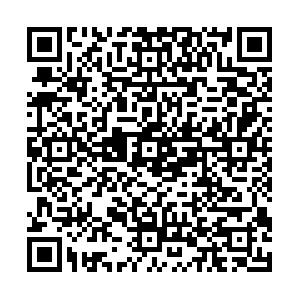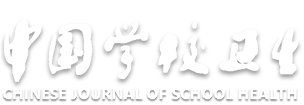Promoting effect of exercise-integrated cognitive intervention on the inhibition control function of college students
-
摘要:
目的 探讨身体运动与认知训练对大学生抑制控制功能的短期改善效果,并明确长期运动融合认知干预与大学生抑制控制功能之间的时间量效关系,为促进大学生抑制控制功能提供参考。 方法 于2022年5月招募天津体育学院大学生参与干预研究,包括短时干预和长期干预。短时干预采用2(身体运动:有、无)×2(认知训练:有、无)组间设计,参与者69人,随机分为运动融合认知组(18人)、身体运动组(16人)、认知训练组(17人)和对照组(静坐观看健康信息视频,18人),干预30 min;长期干预采用2(干预组别:干预组、对照组,组间变量)×5(干预时间:前测、1周、4周、6周和8周,组内变量)的混合实验设计,参与者24人,其中干预组13人,进行运动融合认知干预,每周3次,每次30 min;对照组11人,维持日常活动,未进行干预。因变量均为Flanker任务的正确率和反应时。使用协方差和重复测量方差分析对自变量的主效应及其交互作用进行分析。 结果 短时干预中,在Flanker任务正确率上,身体运动与认知训练的交互作用有统计学意义[F(1, 64)=7.05,P=0.01,η2p=0.10],简单效应检验结果显示,有身体运动条件下,认知训练降低了反应的正确率(P=0.02);在反应时上,大学生身体运动主效应有统计学意义[F(1, 65)=14.12,P<0.01,η2p=0.18]。长期干预中,在Flanker任务反应时上,干预时间的主效应有统计学意义[F(4, 19)=3.03,P=0.04,η2p=0.39],且干预组1, 4, 6, 8周的干预结果[(28.13±10.32)(14.14±26.98)(13.54±25.61)(15.14±21.34)ms]均优于前测[(77.54±39.34)ms];干预组别的主效应有统计学意义[F(1, 22)=6.96,P=0.02,η2p=0.24]。 结论 在对大学生抑制控制功能的短时干预中,身体运动效果优于认知训练;长期运动融合认知训练对大学生抑制控制功能有改善作用。 Abstract:Objective To explore the short-term improvement effect of physical exercise and cognitive training on inhibitory control function of college students, and to clarify the temporal quantitative-effectiveness relationships between long-term exercise-integrated cognitive interventions and inhibitory control function of college students, in order to provide a reference for promoting inhibitory control function in this population. Methods College students from Tianjin University of Sport were recruited in May 2022 to participate in the intervention study, which included both short-term and long-term interventions. The short-term intervention used a 2 (physical exercise: yes, no) × 2 (cognitive training: yes, no) between-groups design, with 69 participants randomized into a movement integration cognitive group (n=18), a physical exercise group (n=16), a cognitive training group (n=17), and a control group (sedentary viewing of a health information video, n=18), for a 30-min intervention.The long-term intervention used a mixed experimental design with a 2 (intervention groups; intervention group, control group, between-group variable) ×5 (intervention time: pre-test, 1 week, 4 weeks, 6 weeks, and 8 weeks, within-group variable) mixed experimental design with 24 participants, including 13 in the intervention group, who underwent the exercise-integrated cognitive intervention for 30 min, 3 times per week, and 11 in the control group, who maintained their daily activities without the intervention. The main effects of the independent variables and their interactions were analyzed using covariance and repeated measures ANOVA. Results There was a statistically significant interaction between physical exercise and cognitive training on accuracy of the Flanker task for the short intervention[F(1, 64)=7.05, P=0.01, ηP2=0.10], and the simple effect test showed that cognitive training reduced accuracy of responses in the presence of physical exercise condition(P=0.02), and the main effect of physical exercise among college students was significant for the reaction time [F(1, 65)=14.12, P < 0.01, η2p=0.18]; for Flanker task reaction time in the long-term intervention, the main effect of intervention time was significant[F(4, 19)=3.03, P=0.04, ηP2=0.39].However, the intervention results of 1, 4, 6 and 8 weeks in the intervention group [(28.13±10.32)(14.14±26.98)(13.54±25.61)(15.14±21.34)ms] were all better than the pre-test [(77.54±39.34)ms], the main effect of intervention group was significant [F(1, 22)=6.96, P=0.02, η=0.24]. Conclusion In a short-term intervention for inhibitory control function in college students, physical exercise is more effective than cognitive training; long-term exercise and cognitive training can improve the inhibitory control function of college students. -
Key words:
- Motor activity /
- Cognition /
- Intervention studies /
- Executive function /
- Students
1) 利益冲突声明 所有作者声明无利益冲突。 -
表 1 长期干预中干预组与对照组大学生干预前后正确率及反应时(x ±s)
Table 1. The accuracy and reaction time before and after longterm intervention in the intervention and control groups of college students(x ±s)
组别 人数 正确率 反应时/ms 前测 1周 4周 6周 8周 前测 1周 4周 6周 8周 干预组 13 0.94±0.04 0.95±0.02 0.96±0.03 0.96±0.04 0.95±0.03 77.54±39.34 28.13±10.32 14.14±26.98 13.54±25.61 15.14±21.34 对照组 11 0.97±0.03 0.95±0.04 0.93±0.08 0.95±0.05 0.92±0.06 64.13±31.44 62.59±46.11 55.79±69.69 56.76±57.25 51.43±44.28 -
[1] MIYAKE A, FRIEDMAN N P, EMERSON M J, et al. The unity and diversity of executive functions and their contributions to complex "frontal lobe" tasks: a latent variable analysis[J]. Cogn Psychol, 2000, 41(1): 49-100. doi: 10.1006/cogp.1999.0734 [2] MORIE K P, GARAVAN H, BELL R P, et al. Intact inhibitory control processes in abstinent drug abusers (Ⅱ): a high-density electrical mapping study in former cocaine and heroin addicts[J]. Neuropharmacology, 2014, 82: 151-160. doi: 10.1016/j.neuropharm.2013.02.023 [3] REBETEZ M M L, ROCHAT L, BARSICS C, et al. Procrastination as a self-regulation failure: the role of inhibition, negative affect, and gender[J]. Pers Individ Dif, 2016, 101: 435-439. doi: 10.1016/j.paid.2016.06.049 [4] YANG Y, RAINE A, COLLETTI P, et al. Morphological alterations in the prefrontal cortex and the amygdala in unsuccessful psychopaths. [J]. J Abnorm Psychol, 2010, 119(3): 546-554. doi: 10.1037/a0019611 [5] MIRANDA C A, MELIÁ DE ALBA A, MARCO T R. Mathematical abilities and executive function in children with attention deficit hyperactivity disorder and learning disabilities in mathematics[J]. Psicothema, 2009, 21(1): 63-69. [6] BROWN A B, BIEDERMAN J, VALERA E M, et al. Effect of dopamine transporter gene (SLC6A3) variation on dorsal anterior cingulate function in attention-deficit/hyperactivity disorder[J]. Am J Med Genet B Neuropsychiatr Genet, 2010, 153B(2): 365-375. doi: 10.1002/ajmg.b.31022 [7] 范文敏, 张国礼. 错失恐惧对抑制控制的影响: 急性有氧运动的干预作用[C]//中国心理学会. 第二十四届全国心理学学术会议摘要集. 新乡, 2022: 1088-1090.FAN W M, ZHANG G L. The effect of misplaced fear on inhibitory control: the role of acute aerobic intervention[C]//Chinese Psychological Association. Abstracts of the 24th national psychology conference. Xinxiang, 2022: 1088-1090. (in Chinese) [8] 刘焕楠, 陈乐琴. 运动干预对青少年儿童抑制控制功能影响的Meta分析[J]. 南京体育学院学报, 2019, 2(8): 33-41.LIU H N, CHEN L Q. Meta-analysis of the effect of exercise intervention on the inhibition control function of adolescents[J]. J Nanjing Sport Inst, 2019, 2(8): 33-41. (in Chinese) [9] 丁相玲, 祖静, 张向葵. 抑制控制训练对手机依赖大学生的干预效果[J]. 心理与行为研究, 2018, 16(3): 342-348. doi: 10.3969/j.issn.1672-0628.2018.03.009DING X L, ZU J, ZHANG X K. The effects of inhibition control training in mobile phone dependency college students[J]. Stud Psychol Behav, 2018, 16(3): 342-348. (in Chinese) doi: 10.3969/j.issn.1672-0628.2018.03.009 [10] SPIERER L, CHAVAN C F, MANUEL A L. Training-induced behavioral and brain plasticity in inhibitory control[J]. Front Hum Neurosci, 2013, 7: 427. [11] FLYNN R M, RICHERT R A. Cognitive, not physical, engagement in video gaming influences executive functioning[J]. J Cogn Dev, 2018, 19(1): 1-20. doi: 10.1080/15248372.2017.1419246 [12] BENZING V, SCHMIDT M. The effect of exergaming on executive functions in children with ADHD: a randomized clinical trial[J]. Scand J Med Sci Sports, 2019, 29(8): 1243-1253. doi: 10.1111/sms.13446 [13] BEST J R. Exergaming immediately enhances children's executive function[J]. Dev Psychol, 2011, 48(5): 1501-1510. [14] AUDIFFREN M, TOMPOROWSKI P D, ZAGRODNIK J. Acute aerobic exercise and information processing: energizing motor processes during a choice reaction time task[J]. Acta Psychol, 2008, 129(3): 410-419. doi: 10.1016/j.actpsy.2008.09.006 [15] SCHMIDT M, BENZING V, KAMER M. Classroom-based physical activity breaks and children's attention: cognitive engagement works![J]. Front Psychol, 2016, 7: 1474. [16] 盖笑松, 许洁, 闫艳, 等. 体感游戏促进儿童的执行功能: 运动强度和认知参与的作用[J]. 心理学报, 2021, 53(5): 505-514.GAI X S, XU J, YAN Y, et al. Exergame can improve children's executive function: the role of physical intensity and cognitive engagement[J]. Acta Psychol Sin, 2021, 53(5): 505-514. (in Chinese) [17] HILLMAN C H, PONTIFEX M B, RAINE L B, et al. The effect of acute treadmill walking on cognitive control and academic achievement in preadolescent children[J]. Neuroscience, 2009, 159(3): 1044-1054. doi: 10.1016/j.neuroscience.2009.01.057 [18] BAUMEISTER R F, TICE V D M. The strength model of self-control[J]. Curr Direct Psychol Sci, 2007, 16(6): 351-355. doi: 10.1111/j.1467-8721.2007.00534.x [19] 张连成, 高淑青, 郑程浩. 自控损耗的生理、心理与脑机制研究进展[J]. 心理技术与应用, 2019, 7(7): 441-448.ZHANG L C, GAO S Q, ZHENG C H. Research progress on physiological, psychological and brain mechanism of ego-depletion[J]. Psychol Technol Appl, 2019, 7(7): 441-448. (in Chinese) [20] BAUMEISTER R F, TICE D M, VOHS K D. The strength model of self-regulation: conclusions from the second decade of willpower research[J]. Perspect Psychol Sci, 2018, 13(2): 141-145. doi: 10.1177/1745691617716946 [21] GAILLIOT M T. Hunger and reduced self-control in the laboratory and across the world: reducing hunger as a self-control panacea[J]. Psychology, 2013, 4(1): 59-66. doi: 10.4236/psych.2013.41008 [22] MOTTA-TEIXEIRA L C, TAKADA S H, MACHADD-NILS A V, et al. Spatial learning and neurogenesis: effects of cessation of wheel running and survival of novel neurons by engagement in cognitive tasks[J]. Hippocampus, 2016, 26(6): 794-803. doi: 10.1002/hipo.22560 [23] LI R, QU P, HU X, et al. Assessing acute effects of two motor-cognitive training modalities on cognitive functions, postural control, and gait stability in older adults: a randomized crossover study[J]. Peer J, 2024, 12: e18306. doi: 10.7717/peerj.18306 [24] LUDYG S, GERBER M, SCHWARZ A, et al. Effects of cognitive and physical load of acute exercise on inhibitory control and prefrontal cortex hemodynamics in children[J]. Med Sci Sports Exerc, 2024, 56(7): 1328-1336. doi: 10.1249/MSS.0000000000003410 [25] O'LEARY K C, PONTIFEX M B, SCUDDER M R, et al. The effects of single bouts of aerobic exercise, exergaming, and videogame play on cognitive control[J]. Clin Neurophysiol, 2011, 122(8): 1518-1525. doi: 10.1016/j.clinph.2011.01.049 [26] DELEUZE J, CHRISTIAENS M, NUYENS F, et al. Shoot at first sight! First person shooter players display reduced reaction time and compromised inhibitory control in comparison to other video game players[J]. Comput Hum Behav, 2017, 72: 570-576. doi: 10.1016/j.chb.2017.02.027 -

 点击查看大图
点击查看大图
表(1)
计量
- 文章访问数: 172
- HTML全文浏览量: 89
- PDF下载量: 23
- 被引次数: 0





 下载:
下载: